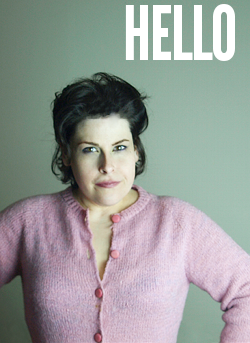Why looking at things upside down might not be as silly as it sounds
By Jessica Albon
A few days ago, I attended a workshop at The Home Depot on embellishing basic furniture pieces. The attendees had varying levels of experience–some had never done anything home-improvement-ish while others had tackled complicated projects. And the questions they asked reflected each person’s level of experience.
What was intriguing was that one woman who’d never picked up a paint brush asked really interesting questions–questions I wouldn’t have thought to ask. Sure, they weren’t advanced, but they were compelling nonetheless because they arose out of a deep sense of curiosity.
I may have done a bit more than just hold a paintbrush, but I still loved hearing the answers to her questions. In fact, the answers to her questions held the interest of even the most advanced attendees and prompted some of the best discussions.
As the expert, you might hesitate to cover more basic topics because you worry about the readers on your list who are more advanced. You don’t want to risk boring anyone with information they already know. After all, how can you establish your expertise if you’re talking about something any rank beginner in your field already knows?
The answer is to turn things upside down, inside out, really get in and examine the details. When you engage your topic with curiosity, the information that results can’t help but be compelling, dynamic, and useful.
Approach your topic with a sense of wonder and delight and you’ll communicate both to your readers. Even advanced readers will find themselves benefiting from the resulting discussion.
And there’s a more subtle benefit of this approach, too. When you take a straightforward beginner’s approach, you risk turning off advanced readers who won’t read the article because “I already know that.” But, when you take a new approach, even when your material is beginner’s stuff, readers will find themselves being drawn in and even those who are very advanced might just find themselves learning a thing or two. What better way to prove your expertise than that?
It’s all well and good to challenge you to turn your topic “upside down and inside out,” but what does that actually mean? Try one of these three approaches:
- Pretend you’re using a camera.
One of my favorite features on my camera is the zoom. I find the details of objects fascinating when viewed through the lens. Pretend you’re using a camera to take a picture of your topic and zoom in closer and closer until you’re looking at something that wouldn’t even fill a square inch of a photo. Then, challenge yourself to expand that one detail to fill an extra large canvas (or, in this case, feature article).
- Listen.
What do people ask about when they’re talking about your newsletter topic? What do they seem most interested in? Listen to their questions, listen to their assumptions, and see if you can’t hear what they’re not saying, too. But watch out–there’s one group of people you should never, ever listen to when it comes to your newsletter content–your competitors. Repeating what your competition writes about in their newsletters is a sure way to miss exploring the details that will highlight your expertise. - Use new language.
Whatever you do, stop talking like everyone else in your industry! If you keep well informed, this will be mighty hard because you’ll be so accustomed to reading and hearing people talk and write in a certain style. But, a simple shortcut is to start browsing the dictionary for interesting words and start using them. Yes, there will be a certain awkwardness as you start to outgrow your industry’s jargon, but you’ll find your new use of language helps you communicate more clearly with your audience, and, as an extra benefit, you also might find yourself experiencing amazing breakthrough ideas (because the way you see what you do will change as the words you use to describe it change).
Nothing demonstrates your expertise like taking a concept that’s pretty basic within your industry and explaining it in a compelling way. The beginners on your list will appreciate your meeting them on their level, and the advanced readers among your subscribers will admire your fresh perspective.
So, get busy taking a look at your topic in a new way and see what you come up with. I’d love to hear what you plan to write about as a result!
Blog







